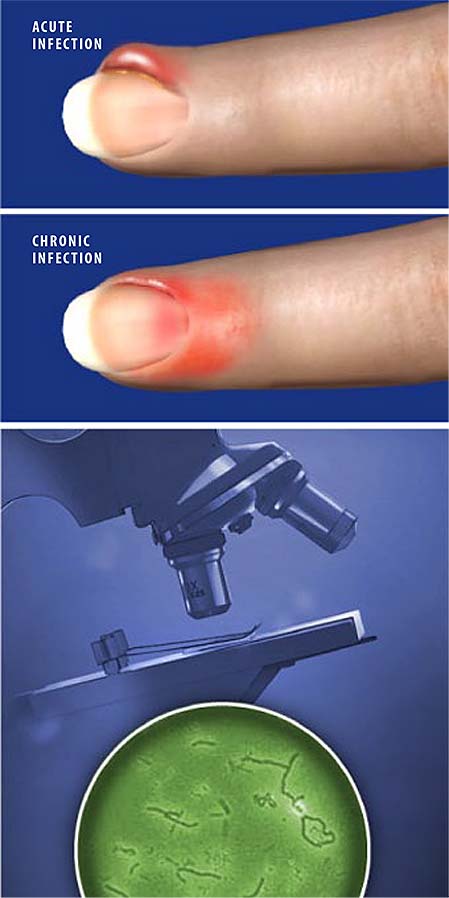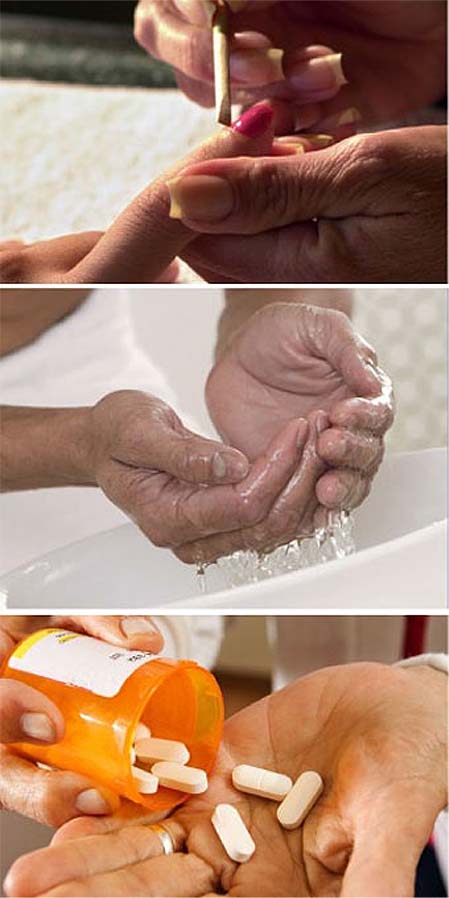Overview
This condition is an infection of the skin around the fingernail, usually at the side of the nail. Infections are usually mild, but may quickly increase in severity if not properly treated. Some infections may be chronic, and difficult to treat.
 Acute Infections
Acute Infections
Acute paronychial infections are caused by bacteria being pushed beneath the cuticle at the side or base of the fingernail. Once inside, the bacteria multiply and grow, first causing the surrounding tissue to become swollen and painful, then forming a pocket of pus. Common causes are hangnails, manicure instruments, nail biting, finger sucking, and trauma to the edge of the nail.
Chronic Infections
Chronic paronychial infections are most often caused by a fungus, in addition to bacteria. People whose hands are repeatedly exposed to water, such as dishwashers, bakers, bartenders, nurses, housekeepers and swimmers, are most at risk for this type of infection. Diabetics and people with a weakened immune system are also at risk.
Symptoms (Acute)
Symptoms of an acute paronychial infection include swelling, redness, throbbing, and tenderness at the nail fold. These infections are usually very painful and may have yellow or white drainage.
 Symptoms (Chronic)
Symptoms (Chronic)
Symptoms for chronic infections include persistent redness, sponginess of the entire nail fold and repeated bouts of swelling and tenderness around the nail. Drainage is less typical in a chronic infection than in an acute infection. Symptoms are usually not as severe as acute infections, and may come and go depending on how often the area is exposed to water.
